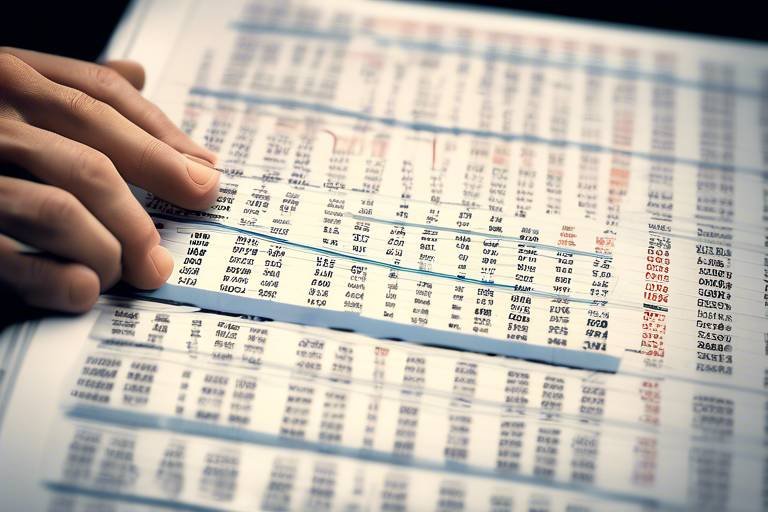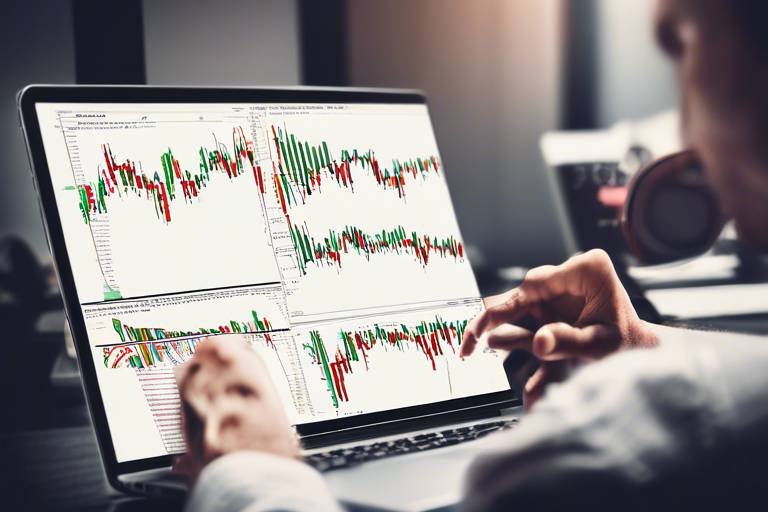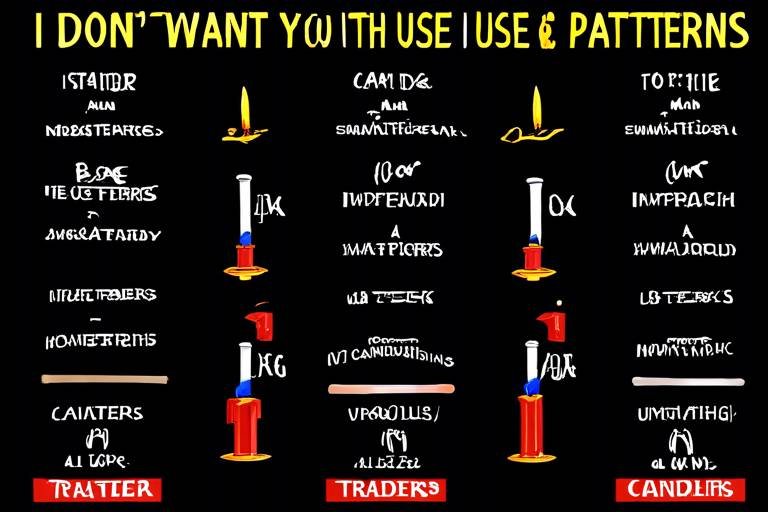Understanding the Mechanics of Margin Trading
Welcome to the fascinating world of margin trading! If you're new to this concept, you might feel like you're standing at the edge of a thrilling roller coaster, ready to take a leap into the unknown. Margin trading can be exhilarating, allowing you to amplify your investment potential, but it also comes with its fair share of risks. So, what exactly is margin trading? In simple terms, it’s a practice that enables investors to borrow funds from a broker to trade larger positions than their current account balance would allow. Imagine you're at a casino, and instead of betting only what you have in your pocket, you can borrow additional chips to increase your stake. This can lead to greater profits, but it can also result in significant losses if the market turns against you.
Understanding the mechanics of margin trading is crucial for anyone looking to navigate this complex landscape. It’s not just about the thrill of potentially high returns; it’s also about managing risks effectively. The beauty of margin trading lies in its ability to leverage your investments, but with great power comes great responsibility. You'll need to be aware of how margin trading works, the types of accounts available, and the risks involved. In this article, we’ll delve deep into these aspects, providing you with the knowledge you need to make informed decisions. So buckle up, because we’re about to embark on a journey through the intricacies of margin trading!
At its core, margin trading is about leveraging your capital. Think of it as using a magnifying glass on your investments; it can enhance your potential returns, but it can also magnify your losses. When you open a margin account, you’re essentially getting a line of credit from your broker, allowing you to purchase more securities than you could with just your available cash. This can be particularly appealing in a rising market where you want to maximize your gains. However, the opposite is true in a declining market, where losses can escalate quickly.
To make the most of margin trading, it's essential to understand key terms like initial margin and maintenance margin. The initial margin is the percentage of the purchase price that you must cover with your own funds, while the maintenance margin is the minimum amount of equity you need to maintain your position. If your account falls below this level, you may face a margin call, requiring you to deposit more funds or sell off assets to cover the shortfall. This is where the real challenge lies—managing your positions and ensuring you have enough equity to avoid those dreaded margin calls.
Not all margin accounts are created equal. There are primarily two types: cash accounts and margin accounts. Understanding the differences between these two types is crucial for any trader. A cash account requires you to pay the full amount for any securities you buy, which means you won’t be able to leverage your trades. This can be a safer option for many, particularly for conservative investors who prefer to minimize their exposure to debt.
Cash accounts are straightforward. You buy securities outright, and you own them fully without any borrowed funds. This means you can only trade with the cash you have available, which can limit your trading potential but also reduces your risk. It’s like driving a car without turbo boost—safe but perhaps a bit slower in terms of growth.
One of the biggest advantages of cash accounts is that they promote disciplined trading. Since you’re required to pay for securities in full, you’re less likely to overextend yourself financially. This can be particularly beneficial for new traders who might be tempted to take on too much risk. Cash accounts can also help you avoid the stress of margin calls, allowing you to trade with peace of mind.
On the flip side, cash accounts can restrict your trading potential. Without the ability to leverage your investments, you might miss out on lucrative opportunities that could arise from market movements. If you’re an aggressive trader looking to maximize profits, a cash account might feel limiting. It’s like trying to sprint with weights on your ankles—you can still move, but you won’t reach your full potential.
Margin accounts, on the other hand, allow you to borrow funds from your broker, effectively increasing your purchasing power. This means you can take larger positions, which can lead to higher profits if your trades are successful. However, it’s important to remember that this increased potential for profit comes with increased risk. If the market moves against you, your losses can exceed your initial investment.
Margin calls are a critical aspect of margin trading that every trader should understand. A margin call occurs when your equity falls below the required maintenance margin. This can happen for various reasons, such as market volatility or poor trading decisions. When faced with a margin call, you’ll typically have to deposit more funds or sell off some of your holdings to bring your account back into compliance.
There are several factors that can lead to margin calls, including:
- Market Volatility: Rapid price changes can quickly erode your equity.
- Poor Trading Decisions: Making impulsive trades without proper analysis can lead to significant losses.
When you receive a margin call, it’s essential to act quickly. Ignoring it can lead to forced liquidation of your assets, which can be detrimental to your trading strategy. Here are a few strategies for responding to margin calls:
- Deposit more funds to restore your equity.
- Sell off underperforming assets to reduce your margin balance.
- Reassess your trading strategy to avoid future margin calls.
While margin trading can offer significant rewards, it also carries substantial risks. The most notable risk is the potential for amplified losses. If a trade goes against you, you could lose not only your initial investment but also owe additional funds to your broker. This can be a harsh reality, especially for inexperienced traders who may not fully understand the implications of trading on margin.
To navigate the world of margin trading successfully, it’s crucial to employ effective strategies. Here are a few key strategies to consider:
- Risk Management: Always set stop-loss orders to protect your investments.
- Diversification: Spread your investments across different assets to reduce risk.
- Education: Continuously educate yourself about market trends and trading strategies.
In conclusion, understanding the mechanics of margin trading is essential for anyone looking to make informed decisions in the financial markets. With the right knowledge and strategies, you can navigate the complexities of margin trading while minimizing risks and maximizing potential rewards. Remember, education and risk awareness are your best allies in this thrilling yet challenging arena of trading.
1. What is margin trading?
Margin trading involves borrowing funds from a broker to trade larger positions than your account balance allows.
2. What are the risks of margin trading?
The primary risks include the potential for amplified losses and margin calls, which can force you to liquidate assets.
3. How can I avoid margin calls?
To avoid margin calls, maintain sufficient equity in your account, set stop-loss orders, and avoid over-leveraging your investments.

The Basics of Margin Trading
Margin trading is a fascinating and sometimes daunting concept that opens up a whole new world for investors. Imagine being able to amplify your buying power and dive into larger trades than your current account balance would typically allow. That's precisely what margin trading offers. By borrowing funds from a broker, traders can take positions that are significantly larger than their cash reserves. However, with great power comes great responsibility. Understanding the fundamental concepts of margin trading is essential for developing effective trading strategies and managing risk.
At its core, margin trading involves two key components: the margin account and the margin requirement. A margin account is a special type of brokerage account that allows you to borrow money to purchase securities. The margin requirement is the minimum amount of equity that must be maintained in your margin account. Typically expressed as a percentage, this requirement can vary depending on the broker and the specific security being traded.
To illustrate how margin trading works, consider this analogy: think of your trading account as a car. Your cash balance is the fuel in the tank. When you trade on margin, you're essentially filling up your tank with borrowed fuel, allowing you to drive further than you could with just your own resources. However, if you push the car too hard and run out of fuel, you risk getting stranded on the side of the road—this is akin to facing a margin call when your equity falls below the required level.
Here’s a quick breakdown of how margin trading operates:
- Initial Margin: This is the amount of equity you must deposit to open a margin position. It’s usually a percentage of the total trade value.
- Maintenance Margin: Once your position is open, you must maintain a certain level of equity in your account to keep the position active. If your equity falls below this level, you’ll receive a margin call.
- Leverage: This is the ratio of the amount borrowed to the equity in your account. Higher leverage can lead to larger profits but also increases the risk of significant losses.
Understanding these components is crucial for any trader looking to utilize margin trading effectively. It’s not just about the potential for increased profits; it’s also about comprehending the risks involved. When you trade on margin, you’re not only investing your own money but also the broker’s, which can lead to amplified gains or devastating losses. Therefore, it’s vital to approach margin trading with a well-thought-out strategy and a solid grasp of the mechanics involved.
In summary, margin trading can be a powerful tool for investors willing to navigate its complexities. By borrowing funds, traders can increase their purchasing power and potentially enhance their returns. However, it’s essential to understand the risks and responsibilities that come with it. As you delve deeper into the world of margin trading, remember that knowledge is your best ally.

Types of Margin Accounts
When it comes to margin trading, understanding the different types of margin accounts is paramount. These accounts serve as the foundation for your trading activities and can significantly influence your investment strategy. Essentially, there are two main types of margin accounts: cash accounts and margin accounts. Each type has its own unique features, benefits, and requirements, which can impact how you manage your investments.
Let's dive deeper into these two types of accounts. First, a cash account is quite straightforward. In this type of account, you must pay the full amount for any securities you wish to purchase. This means that if you want to buy 100 shares of a stock priced at $50, you need to have $5,000 in your account. Cash accounts are great for those who prefer a conservative approach to investing. They promote disciplined trading since you're only using your own funds, which can help you avoid the pitfalls of debt and financial overextension.
However, cash accounts do come with their limitations. Since you can't leverage your investments, your potential for profit is capped. This can be a significant drawback for traders who are looking to maximize their returns through aggressive strategies. You might find yourself missing out on lucrative opportunities simply because you're unable to borrow funds to increase your purchasing power.
On the flip side, we have margin accounts. These accounts allow you to borrow money from your broker, which can substantially increase your purchasing power. For instance, if you have $5,000 in your margin account, your broker might allow you to trade up to $10,000 worth of securities. This leverage can amplify your profits, but it also comes with increased risk. If the market moves against you, your losses can escalate just as quickly as your gains.
To help you visualize the differences between these two types of accounts, here’s a simple comparison table:
| Feature | Cash Account | Margin Account |
|---|---|---|
| Leverage | No leverage | Available |
| Risk of Debt | Low | High |
| Requirements | Full payment for securities | Initial margin requirement |
| Ideal for | Conservative investors | Aggressive traders |
Choosing the right type of margin account is crucial for your trading success. If you're a conservative investor who prefers to minimize risks, a cash account might be your best bet. However, if you're willing to take on more risk for the potential of higher returns, a margin account could be the way to go. Always remember to assess your own financial situation, risk tolerance, and trading goals before making a decision.
In conclusion, understanding the types of margin accounts available to you is essential for crafting an effective trading strategy. Whether you opt for a cash account or a margin account, knowing the implications of each will help you navigate the complex world of margin trading with greater confidence.
1. What is the main difference between a cash account and a margin account?
The primary difference lies in the ability to borrow funds. A cash account requires you to pay in full for securities, while a margin account allows you to borrow money from your broker to increase your purchasing power.
2. Can I lose more money than I invest in a margin account?
Yes, trading on margin can lead to losses that exceed your initial investment. This is why understanding the risks involved is crucial.
3. What happens if I receive a margin call?
A margin call occurs when your account equity falls below the required maintenance margin. You will need to deposit more funds or sell some assets to meet the margin requirement.
4. Are there any restrictions on cash accounts?
Yes, cash accounts limit your trading to the cash available in your account, which can restrict your ability to take advantage of certain market opportunities.

Cash Accounts
Cash accounts are the more traditional way of trading in the financial markets. Unlike margin accounts, where you can borrow money to amplify your trading power, cash accounts require you to pay the full price for any securities you wish to purchase. This means that if you're eyeing a stock priced at $100, you need to have that entire amount in your account before you can buy even a single share. While this might seem limiting, it actually encourages a more disciplined approach to trading.
One of the significant advantages of cash accounts is that they help you avoid the pitfalls of debt. By requiring full payment upfront, cash accounts force traders to be more selective and thoughtful about their investments. This can be particularly beneficial for those who are new to trading or for conservative investors who want to minimize their exposure to risk. Imagine trying to navigate through a crowded market; having a cash account is like holding a map that keeps you from getting lost in the chaos.
However, it's essential to be aware of the disadvantages that come with cash accounts as well. Since you cannot leverage your investments, your potential for profit is limited. If you’re an aggressive trader looking to capitalize on short-term price movements, a cash account might feel like trying to sprint in a marathon—you're at a disadvantage compared to those who can borrow funds to enhance their positions. Without the ability to use leverage, you may miss out on lucrative opportunities that could arise in a volatile market.
In summary, cash accounts are ideal for those who prioritize safety and discipline over high-risk, high-reward scenarios. They offer a straightforward approach to trading, eliminating the complexities that come with borrowing. However, if you're looking to maximize your trading potential, you might find cash accounts somewhat restrictive. Understanding these dynamics is crucial for making informed decisions about your trading strategy and aligning it with your financial goals.
- What is a cash account? A cash account is a type of brokerage account that requires you to pay the full amount for any securities purchased without borrowing funds.
- What are the benefits of using a cash account? Cash accounts promote disciplined trading, reduce the risk of debt, and are ideal for conservative investors.
- Can I trade on margin with a cash account? No, cash accounts do not allow for margin trading; you must have the full amount available in your account.
- Are there any limitations to cash accounts? Yes, cash accounts limit your trading potential because you cannot leverage your investments, which can hinder profit opportunities.

Advantages of Cash Accounts
Cash accounts offer a unique set of advantages that can significantly benefit traders, especially those who prefer a more conservative approach. One of the most notable advantages is the requirement for full payment upfront. This means that traders must have the entire amount needed to purchase securities, which inherently promotes a disciplined trading strategy. By paying in full, traders avoid the pitfalls of debt and the stress that comes with managing borrowed funds. This leads to a more stable trading experience, where the focus is on making informed decisions rather than worrying about margin requirements.
Moreover, cash accounts provide a sense of security. Since there’s no borrowing involved, traders are less exposed to the risks associated with margin trading. This can be particularly appealing during volatile market conditions, where the potential for losses can escalate quickly. In a cash account, the risk is limited to the capital invested, allowing traders to sleep a little easier at night knowing that they won’t face unexpected margin calls.
Another significant advantage is the flexibility in trading strategies. Without the pressure of maintaining a margin account, traders can take their time to analyze market conditions and make decisions that align with their financial goals. This can lead to a more thoughtful approach to investing, where traders are less likely to make impulsive decisions driven by the need to meet margin requirements. Additionally, cash accounts often incur lower fees compared to margin accounts, as there are no interest charges on borrowed funds.
Here’s a quick summary of some of the key advantages of cash accounts:
- Disciplined Trading: Full payment reduces the temptation to over-leverage.
- Lower Risk: No debt means no margin calls, providing peace of mind.
- Cost-Effective: Typically lower fees without interest on borrowed funds.
- Flexibility: Greater freedom to develop and execute trading strategies without the pressure of margin requirements.
In conclusion, cash accounts can be a fantastic choice for traders who value stability and control over their investments. While they may limit potential profits compared to margin accounts, the benefits of reduced risk and lower stress levels often outweigh the downsides for many investors. Understanding these advantages can help traders make informed decisions that align with their investment philosophy and risk tolerance.
Q1: What is a cash account?
A cash account is a type of brokerage account where the investor must pay for securities in full at the time of purchase, without borrowing funds.
Q2: Are cash accounts safer than margin accounts?
Yes, cash accounts are generally considered safer because they do not involve borrowing, which eliminates the risk of margin calls.
Q3: Can I trade options in a cash account?
Yes, but there may be restrictions on certain types of options trades, depending on the broker.
Q4: How do cash accounts affect my investment strategy?
Cash accounts encourage more disciplined trading and can lead to a more thoughtful investment strategy since there’s no pressure from margin requirements.

Disadvantages of Cash Accounts
While cash accounts come with their own set of advantages, they are not without their disadvantages. One of the most significant drawbacks is the limited trading potential. Since traders are required to pay the full amount for any securities they wish to purchase, they miss out on the opportunity to leverage their investments. This can be particularly frustrating for those who are looking to capitalize on short-term market movements or take advantage of sudden price surges. Imagine trying to catch a wave with a surfboard that’s too small; you just can’t ride the big ones!
Additionally, cash accounts can hinder the ability to diversify an investment portfolio. When you're limited to trading only with the cash you have on hand, you might find yourself unable to invest in multiple assets simultaneously. This lack of diversification can increase the risk of your overall investment strategy. For instance, if you put all your eggs in one basket and that basket falls, you're left with nothing. On the other hand, a margin account allows you to spread your investments across various sectors, potentially mitigating losses.
Moreover, cash accounts can lead to missed opportunities. In a fast-paced market, timing is everything. If a trader has to wait until they have enough cash to buy a security, they might miss out on a great buying opportunity. This is especially true in volatile markets where prices can change dramatically within minutes. The inability to act quickly can be a significant disadvantage, leaving traders feeling like they’re always a step behind.
Finally, cash accounts often come with higher transaction costs per trade. Since you're limited to using only the cash available in your account, you might find yourself making smaller trades more frequently, which can add up in commissions and fees. In contrast, margin accounts can allow for larger trades that might lower the cost per transaction. This can be a crucial factor for active traders who make numerous trades each day.
In summary, while cash accounts promote a disciplined approach to trading, they also come with limitations that can restrict a trader's ability to maximize their investment potential. Understanding these disadvantages is essential for anyone considering their trading options.
- What is a cash account? A cash account is a type of brokerage account where the investor must pay the full amount for securities purchased. No borrowing is allowed.
- What are the main disadvantages of cash accounts? The main disadvantages include limited trading potential, inability to diversify easily, missed opportunities, and potentially higher transaction costs.
- Can I trade on margin with a cash account? No, cash accounts do not allow margin trading. You must have the full cash amount to make trades.
- Who should consider a cash account? Cash accounts are ideal for conservative investors who prefer to avoid the risks associated with leverage and margin trading.

Margin Accounts
Margin accounts are a powerful tool for traders looking to amplify their purchasing power and take advantage of market opportunities. By allowing traders to borrow funds from their brokers, these accounts enable investors to control larger positions than they could with their own capital alone. Imagine it like using a lever to lift a heavy weight; with the right amount of leverage, you can elevate your trading potential significantly.
However, margin accounts come with their own set of rules and requirements. When you open a margin account, you must maintain a minimum balance, known as the initial margin, which is typically set by the brokerage firm. This initial margin is a percentage of the total value of the securities you wish to purchase. For example, if you want to buy $10,000 worth of stock and your broker requires an initial margin of 50%, you'll need to have at least $5,000 in your account. This requirement ensures that you have skin in the game, reducing the risk for the broker while also encouraging responsible trading practices.
Another crucial aspect of margin accounts is the maintenance margin. This is the minimum amount of equity you must maintain in your margin account after the purchase has been made. If your equity falls below this threshold, you may receive a margin call, prompting you to deposit more funds or sell off some of your assets to restore the required balance. This can create a stressful situation for traders, especially during volatile market conditions when prices can fluctuate rapidly.
Furthermore, margin accounts can be classified into two main types: standard margin accounts and portfolio margin accounts. Standard margin accounts typically follow the rules set by the Financial Industry Regulatory Authority (FINRA), while portfolio margin accounts offer more flexibility and potentially lower margin requirements based on the overall risk of the portfolio. This means that if you have a well-diversified portfolio, you might be eligible for lower margin requirements, allowing you to leverage your investments more efficiently.
In conclusion, while margin accounts provide traders with the opportunity to enhance their trading capabilities, they also require a deep understanding of the associated risks and responsibilities. It's essential to approach margin trading with caution and to have a solid risk management strategy in place. By doing so, you can navigate the complexities of margin accounts and harness their potential to maximize your trading success.
- What is a margin account? A margin account allows traders to borrow funds from their broker to purchase securities, enabling them to trade larger positions than their account balance would normally allow.
- What is the difference between a cash account and a margin account? In a cash account, traders must pay the full amount for securities purchased, whereas a margin account allows for borrowing, increasing purchasing power.
- What happens during a margin call? A margin call occurs when your equity falls below the maintenance margin, requiring you to deposit additional funds or sell assets to meet the required balance.
- Can I lose more than my initial investment with a margin account? Yes, trading on margin can lead to amplified losses, meaning you could lose more than your initial investment if the market moves against you.

Understanding Margin Calls
When you dive into the world of margin trading, one term that you’ll frequently encounter is margin call. But what exactly does it mean? Simply put, a margin call is a notification from your broker that your account's equity has fallen below the required minimum level, known as the maintenance margin. This situation can arise due to various factors, primarily market fluctuations that affect the value of your investments. Imagine you're on a rollercoaster; just when you think you're at the peak, the ride takes a sudden dip, and you find yourself grasping for stability. That’s what a margin call feels like in the trading world.
So, why should you care about margin calls? Well, they can significantly impact your trading positions. When you receive a margin call, your broker will typically require you to either deposit more funds into your account or sell some of your assets to bring your equity back up to the required level. If you fail to respond to a margin call, the broker has the right to liquidate your assets without your consent, which can lead to substantial losses. This is why understanding the mechanics behind margin calls is crucial for anyone engaging in margin trading.
There are several common causes of margin calls, which can be broadly categorized as follows:
- Market Volatility: Sudden price drops in your assets can quickly erode your equity.
- Poor Trading Decisions: Over-leveraging or making risky trades can lead to significant losses.
- Changes in Margin Requirements: Brokers can adjust their margin requirements based on market conditions, which can trigger a margin call.
Understanding these triggers is essential for managing risk effectively. For instance, if you are aware that a particular asset is subject to high volatility, you might decide to limit your exposure or use tighter stop-loss orders to protect your investment. The key takeaway here is that being proactive can help you avoid the disheartening experience of a margin call.
When faced with a margin call, quick action is vital. Here are some strategies to consider:
- Deposit Additional Funds: If you have the liquidity, adding more cash to your account can help meet the margin requirement.
- Reduce Your Positions: Selling off some of your assets can also help restore your equity balance.
- Evaluate Your Trading Strategy: Take a step back and reassess your trading approach. Are you taking on too much risk? Adjusting your strategy could prevent future margin calls.
In conclusion, understanding margin calls is a fundamental aspect of margin trading. They serve as a critical reminder of the risks involved and the necessity for diligent risk management. By staying informed and prepared, you can navigate the complexities of margin trading with greater confidence and minimize the chances of encountering a margin call.
1. What happens if I can't meet a margin call?
If you fail to meet a margin call, your broker may liquidate your assets to cover the shortfall. This means they can sell your securities without your permission, which could result in significant losses.
2. How can I avoid margin calls?
To avoid margin calls, you should maintain a healthy equity level in your margin account. This can be achieved by not over-leveraging, setting stop-loss orders, and regularly monitoring your investments.
3. Are margin calls common in trading?
Margin calls can be common, especially in volatile markets. Traders should be aware of the risks and ensure they have a plan in place to respond quickly if a margin call occurs.

Causes of Margin Calls
Margin calls can be a trader's worst nightmare, often arriving unexpectedly and leaving a trail of panic in their wake. But what exactly triggers these calls? Understanding the causes is crucial for any trader looking to navigate the turbulent waters of margin trading. One of the primary reasons for a margin call is a significant drop in the value of the securities held in a margin account. When the market takes a nosedive, the equity in your account can quickly diminish, leading to a situation where it falls below the required maintenance margin set by your broker.
Another common cause of margin calls is increased volatility in the market. Imagine riding a rollercoaster; one moment you’re up high, and the next, you’re plummeting down. This sudden shift can trigger margin calls as the value of assets fluctuates wildly. Additionally, poor trading decisions, such as holding onto losing positions for too long or over-leveraging your investments, can exacerbate the risk of a margin call. It's like playing with fire; if you’re not careful, you might get burned.
To put this into perspective, let’s consider a few key factors that can lead to margin calls:
- Market Volatility: Rapid price changes can quickly affect your equity.
- Declining Asset Prices: A drop in the value of your holdings can trigger a call.
- Inadequate Risk Management: Failing to set stop-loss orders can leave you vulnerable.
- Over-leveraging: Borrowing too much can amplify losses, increasing the likelihood of a margin call.
In summary, being aware of these causes can help traders take proactive measures to safeguard their investments. By keeping a close eye on market conditions and maintaining a disciplined trading approach, you can reduce the risk of facing a margin call. Remember, knowledge is power, and in the world of margin trading, it can also be the difference between success and failure.
What is a margin call?
A margin call is a demand by a broker for an investor to deposit additional money or securities into their margin account when the equity falls below the required maintenance margin.
How can I avoid margin calls?
To avoid margin calls, maintain a diversified portfolio, set stop-loss orders, and regularly monitor your investments to ensure they meet the required equity levels.
What happens if I can’t meet a margin call?
If you cannot meet a margin call, the broker may liquidate your positions to cover the shortfall, potentially resulting in significant losses.
Is margin trading suitable for everyone?
Margin trading carries significant risks and is generally not suitable for inexperienced investors. It’s essential to have a solid understanding of the market and risk management strategies before engaging in margin trading.

Responding to Margin Calls
When a trader receives a margin call, it can feel like a sudden jolt of electricity coursing through their trading strategy. A margin call indicates that your equity has dipped below the required maintenance margin, and it's crucial to respond swiftly to mitigate potential losses. Ignoring a margin call can lead to forced liquidation of your positions, which is like throwing your hard-earned investments out the window. So, how should you react when faced with this situation?
First and foremost, it’s essential to assess your current financial situation. Take a moment to evaluate your account balance, the assets you hold, and the overall market conditions. This analysis will help you determine whether you can deposit additional funds to meet the margin requirement or if you need to adjust your trading strategy. It’s like checking the weather before heading out; you want to ensure you’re prepared for any storm that may come your way.
Here are some strategies to consider when responding to a margin call:
- Deposit Additional Funds: If you have the liquidity, adding more capital to your margin account can help you regain compliance with the maintenance margin. This is often the simplest solution, allowing you to keep your positions intact.
- Sell Off Assets: If adding funds isn't feasible, consider liquidating some of your holdings to raise the necessary capital. This option can be painful, especially if it means selling assets at a loss, but it may be necessary to avoid further losses.
- Reassess Your Positions: Take a hard look at your current investments. Are there underperforming assets that you can sell? Sometimes, trimming the fat from your portfolio can provide the breathing room you need.
- Communicate with Your Broker: Don't hesitate to reach out to your broker for guidance. They can provide insights into your account and may offer solutions you hadn’t considered. Think of them as your trading lifeline.
Responding to a margin call is not just about immediate action; it’s also about learning from the experience. Each margin call can serve as a valuable lesson in risk management and market dynamics. By analyzing what led to the call—be it poor decision-making, unexpected market volatility, or insufficient margin awareness—you can refine your trading strategies and better prepare for the future.
In conclusion, while margin calls can be daunting, they also present an opportunity for growth and learning. By acting quickly and thoughtfully, you can navigate through the challenges they present and emerge as a more informed and resilient trader.
1. What is a margin call?
A margin call occurs when the equity in your margin account falls below the broker’s required minimum level, prompting the broker to request additional funds or the sale of assets to cover the shortfall.
2. How can I avoid margin calls?
To avoid margin calls, maintain a healthy balance in your margin account, use stop-loss orders to limit potential losses, and stay informed about market conditions that could affect your holdings.
3. What happens if I ignore a margin call?
If you ignore a margin call, your broker has the right to liquidate your positions to cover the shortfall, which can result in significant financial loss.
4. Can I negotiate with my broker after receiving a margin call?
Yes, you can communicate with your broker to discuss your options. They may offer alternative solutions or advice on how to manage your account more effectively.

Risks Involved in Margin Trading
Margin trading can be a double-edged sword, offering the potential for significant profits while simultaneously exposing traders to substantial risks. One of the most critical aspects to grasp is that while leveraging can amplify gains, it can also amplify losses. Imagine riding a roller coaster—there are thrilling highs, but the drops can be steep and sudden. In the world of trading, this means that a small market movement can lead to considerable financial consequences.
One of the primary risks associated with margin trading is the potential for margin calls. A margin call occurs when the value of your account falls below the broker's required minimum equity level. When this happens, you may be required to deposit additional funds or liquidate some of your assets to cover the shortfall. This situation can be particularly stressful, as you may be forced to sell at a loss if the market is not in your favor. Understanding the mechanics behind margin calls is vital; they are not just a warning but a signal that your trading strategy may need reassessment.
Another significant risk is the impact of market volatility. Markets can swing dramatically due to various factors such as economic news, geopolitical events, or changes in market sentiment. For instance, if you are heavily leveraged and the market moves against your position, the losses can escalate quickly. In such scenarios, traders can find themselves in a precarious position, where the losses exceed their initial investment. This is why it's essential to have a robust risk management strategy in place.
Additionally, traders must be aware of the psychological pressures that come with margin trading. The potential for quick profits can lead to emotional decision-making, which often results in poor trading choices. The fear of missing out (FOMO) can push traders to take unnecessary risks, while the anxiety of losing money can lead to panic selling. It's crucial to maintain a level head and stick to your trading plan, regardless of the market's fluctuations.
To summarize, the risks involved in margin trading include:
- Amplified losses: The potential for losses increases with leverage.
- Margin calls: The risk of being forced to deposit more funds or liquidate positions.
- Market volatility: Sudden market movements can lead to significant losses.
- Psychological pressures: Emotional decision-making can negatively impact trading outcomes.
Traders must approach margin trading with a clear understanding of these risks. By employing sound risk management techniques, such as setting stop-loss orders and diversifying investments, traders can mitigate some of the dangers associated with margin trading. Remember, knowledge is power, and being informed about the risks can help you navigate the thrilling yet treacherous waters of margin trading more effectively.
What is margin trading?
Margin trading involves borrowing funds from a broker to trade larger positions than your account balance allows. This can amplify both profits and losses.
What is a margin call?
A margin call occurs when your account's equity falls below the broker's required minimum, prompting you to either deposit more funds or sell off assets.
How can I manage risks in margin trading?
Effective risk management strategies include setting stop-loss orders, diversifying your investments, and maintaining a clear trading plan to avoid emotional decision-making.
Is margin trading suitable for everyone?
Margin trading is not suitable for all investors. It requires a solid understanding of market dynamics and risk management techniques. Conservative investors may prefer cash accounts to minimize exposure.

Strategies for Successful Margin Trading
When it comes to margin trading, having a solid strategy is not just a good idea—it's essential. The allure of using borrowed funds to amplify profits can be tempting, but without a well-thought-out approach, traders can quickly find themselves in a precarious position. So, how can you navigate the thrilling yet risky waters of margin trading effectively? Let's dive into some key strategies that can help you succeed.
First and foremost, risk management should be at the forefront of any margin trading strategy. This involves setting strict limits on how much of your capital you're willing to risk on any single trade. A common rule of thumb is to never risk more than 1-2% of your trading account on a single position. By doing this, you can protect your overall capital and avoid catastrophic losses. It's like wearing a seatbelt in a car; it might feel restrictive at times, but it keeps you safe during those unexpected turns.
Another crucial strategy is to use stop-loss orders. A stop-loss order automatically sells your position when it reaches a certain price, helping you limit losses. This is especially important in margin trading, where a small price movement can lead to significant losses due to leverage. Think of it as a safety net that catches you before you fall too far. Setting your stop-loss just below a support level can be a smart move, as it gives your trade some room to breathe while still protecting your investment.
Additionally, it’s vital to keep a close eye on market trends. Understanding whether the market is in an uptrend, downtrend, or sideways can inform your trading decisions. For instance, in a strong uptrend, you might want to consider buying on dips, while in a downtrend, short selling could be more appropriate. Staying informed about economic indicators, news events, and overall market sentiment can provide valuable insights that help you make better trading decisions.
Moreover, consider employing a diversified portfolio approach. While margin trading can amplify your gains, it can also amplify your losses. By diversifying your investments across different assets, you can mitigate risk. This could mean trading in various stocks, commodities, or even currencies. Just as a well-balanced diet is essential for health, a diversified portfolio can provide a more stable trading experience.
Lastly, continuous education and self-assessment are vital. The markets are always changing, and what worked yesterday might not work today. Regularly reviewing your trades—both the successful ones and the failures—can provide insights into your trading style and help you refine your strategies. Engaging with trading communities, reading market analysis, and even taking courses can keep your skills sharp and your knowledge current.
In summary, successful margin trading isn't just about the thrill of potential profits; it's about being strategic and disciplined. By implementing effective risk management, utilizing stop-loss orders, staying aware of market trends, diversifying your portfolio, and committing to ongoing education, you can navigate the complexities of margin trading with greater confidence and success.
- What is margin trading? Margin trading involves borrowing funds from a broker to trade larger positions than your account balance allows.
- What are the risks of margin trading? The primary risks include amplified losses, margin calls, and the potential for significant debt if trades do not go as planned.
- How can I manage risks in margin trading? You can manage risks by setting strict risk limits, using stop-loss orders, diversifying your portfolio, and continuously educating yourself.
- What is a margin call? A margin call occurs when an investor's equity falls below the required maintenance margin, prompting the broker to request additional funds or sell assets.

Conclusion: Navigating Margin Trading Wisely
In the world of finance, margin trading can feel like a double-edged sword. On one side, it offers the tantalizing possibility of increased profits by allowing traders to leverage their investments. On the other, it introduces a level of risk that can lead to devastating losses if not managed properly. As we've explored throughout this article, understanding the mechanics of margin trading is not just beneficial—it's essential.
To navigate this complex landscape, traders must prioritize education and risk awareness. Here are some key takeaways to keep in mind:
- Know Your Account Type: Whether opting for a cash account or a margin account, understanding the features and limitations of each can significantly impact your trading strategy.
- Be Prepared for Margin Calls: Recognizing the conditions that lead to margin calls and having a plan in place can help you react swiftly and effectively.
- Implement Risk Management Strategies: Utilize stop-loss orders, diversify your portfolio, and never invest more than you can afford to lose.
Ultimately, margin trading isn't just about making quick profits; it's about making informed decisions. As you delve deeper into this trading style, remember that the financial markets are dynamic and can change rapidly. Staying informed, continuously educating yourself, and adapting your strategies are crucial elements for long-term success.
In conclusion, while margin trading can amplify both gains and losses, a well-informed trader can navigate these waters wisely. Embrace the learning journey, stay aware of the risks, and you'll be better positioned to make sound investment choices.
Here are some common questions traders have regarding margin trading:
- What is a margin call? A margin call occurs when the equity in a margin account falls below the broker's required level, prompting the trader to deposit more funds or sell assets.
- How much leverage can I use in margin trading? Leverage varies by broker and asset type, but it typically ranges from 2:1 to 50:1, depending on regulations and the specific market.
- Can I lose more than my initial investment? Yes, in margin trading, it is possible to lose more than your initial investment due to the amplified risks associated with borrowing funds.
Frequently Asked Questions
- What is margin trading?
Margin trading is a method that allows investors to borrow funds from brokers to trade larger positions than their account balance would typically allow. This means you can amplify your potential gains, but it also comes with increased risks.
- How do margin accounts differ from cash accounts?
Margin accounts enable you to borrow money to increase your purchasing power, while cash accounts require you to pay the full amount for securities upfront. This fundamental difference affects how much leverage you can use and the risks involved in trading.
- What happens during a margin call?
A margin call occurs when your equity falls below the broker's required maintenance margin. In such cases, you may need to deposit more funds or sell some of your assets to bring your account back into compliance.
- What are the risks associated with margin trading?
Margin trading carries several risks, including the potential for amplified losses. If the market moves against your position, you could lose more than your initial investment, leading to significant financial repercussions.
- How can I manage risks when trading on margin?
Effective risk management strategies include setting stop-loss orders, diversifying your portfolio, and only using a small percentage of your capital for margin trading. These practices can help you minimize potential losses while maximizing your trading opportunities.
- What should I do if I receive a margin call?
If you receive a margin call, it’s crucial to act promptly. You can either deposit additional funds into your account or sell some of your holdings to meet the margin requirement. Ignoring a margin call can lead to your broker liquidating your positions to recover the loaned amount.
- Is margin trading suitable for everyone?
Margin trading is not suitable for all investors. It is generally more appropriate for experienced traders who understand the risks and can manage them effectively. If you're a conservative investor, you might want to stick with cash accounts to avoid the risks associated with margin trading.
- Can margin trading impact my credit score?
Margin trading itself does not directly affect your credit score, as it is not the same as taking out a loan. However, if you fail to meet margin calls and your broker liquidates your assets, it could lead to financial difficulties that might indirectly impact your credit.


















